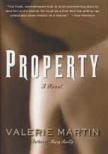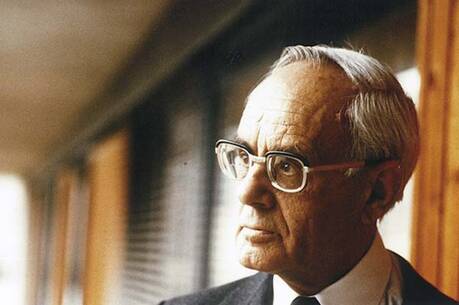Subjugating Sarah
Valerie Martin’s new novel is aptly titled. The power of property—persons and things—drives the plot and illuminates the characters. Captors become captives, and lives are irrevocably changed by power struggles over property.
The novel’s setting moves back and forth from plantation life on a sugar cane farm outside New Orleans to aristocratic life in the city. The time is 1828, and the action of the novel is compressed into a few months.
Property explores the theme that pre-Civil War society’s social mores turned women into “property,” just as a bill of sale defined slaves. The unique feature of this novel, its point of view, gives us an inside look at the life of a woman slave owner. Manon Gaudet, daughter of a faded New Orleans aristocratic Creole family, tells the story.
As the novel opens, Manon has been married for eight years to a man she despises. She had misread her husband at the beginning of their relationship. “When he was courting me, he was mysterious, and I took his aloofness for sensitivity.” On her wedding night, she learns that he is driven by brute passion. During the following two weeks, in the city, she realizes that they have nothing in common.
He—unnamed—becomes a tyrannical master on the plantation, using slaves, both male and female, for his sexual gratification. Manon has one possession, a female slave, Sarah, given to her at her marriage by her aunt Lelia. When Sarah becomes pregnant by the black butler, Manon’s husband refuses them permission to marry, sells the butler and whips Sarah. After the child is born, it is sent immediately to another plantation to be nursed, raised and sold. The husband then takes the slave, who is bitter with anger, as his mistress, and she bears his child.
Wild, deaf, red-headed Walter, slave-child of miscegenation, precipitates major and minor crises in the novel. He becomes the lord of disorder, wreaking havoc every time he edges into the scene. His deafness symbolizes the inability of the characters to hear the muted sounds of strife around them.
In spare, terse prose, Valerie Martin develops the theme that slavery ruins both those who are owned and their owners. Manon reminisces about her idolized father, who, acting as his own overseer, modeled the right treatment of slaves. When she was 13, he died in the flames of his burning mill. However, she later learns through reading his diary that he felt such guilt about his role as a slave-owner that he turned from his wife in their marriage bed. She recalls a buried childhood memory of slave children telling her, “My auntie say your pappy set that fire hisself and shot hisself in the head, so he dead already when the beam came down on him.”
Manon plays her role as plantation mistress, giving orders briskly but courteously with the expectation of prompt obedience. Only with Sarah does she display a heart of stone. Her hatred of Sarah and her demand for complete subservience is met with silent contempt, sullen obedience and, in the end, conniving defiance.
Valerie Martin effectively portrays history, with chilling scenes of the streets of New Orleans during an epidemic of yellow fever. The reader rides in a carriage with Manon as she returns home to care for her dying mother. She sees open wagons carrying dead bodies, smells the stench of rotting flesh, wonders at the silence of the streets, feels the miasma of fear. The disease respects no level of society; it brings downNegroes and Creoles alike.
Since Manon has hidden her unhappy marriage from her mother, the irony is heavy when her mother’s last words to her are a rebuke: “I thought you would manage better than you have. You neglect your duties and so you have no control in your own house.” By this time Manon knows that her widowed mother had little dowry to give her, so she herself was the “property” that her husband gained through marriage.
A slave insurrection, which Martin depicts in sparse and vivid details, changes the course of Manon’s life. We view the revolt through Manon’s eyes, and we imagine what she imagines. Given only “hints, followed by guesses,” we identify with Manon’s bewilderment.
The language of Property is tightly controlled; emotions are concealed. Manon, never a likeable person, acts with deliberation, courage and cunning. The qualities of sensitivity and naïveté, which we see in flashbacks of the young girl, have given way to spitefulness. Sarah is Manon’s adversary from the day she becomes her property; the novel eventually pits these two women directly against each other for a lifetime.
Readers who learn of slavery from the inside through such books as Frederick Douglass’ autobiography and Toni Morrison’s Beloved will find this novel equally disturbing and equally rewarding. Valerie Martin, acclaimed for the radiance of Salvation, her biography of St. Francis of Assisi, in this book touches the heart of darkness in a 19th-century world. By inference, she suggests the moral darkness of our times.
This article also appeared in print, under the headline “Subjugating Sarah,” in the June 23, 2003, issue.








